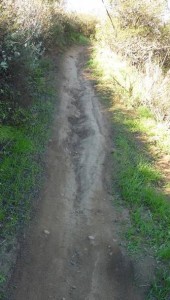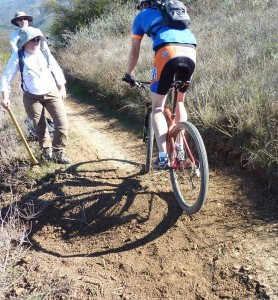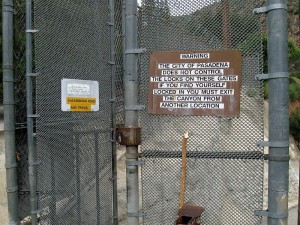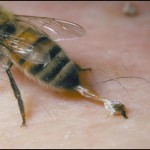Sunday’s trailwork on El Prieto went exceptionally well. We had perfectly cool, clear weather, damp soil that was easy to work with, and good spirits all around. Thanks to the approximately 50 people who came out to show this heavily damaged trail some much-needed love.
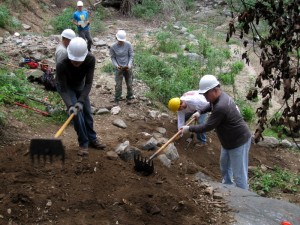
Rock Armoring Teamwork
In over 320 person-hours of labor, several washed out drainages were restored, brush was cut back, and many vulnerable sections of the trail tread received rock-armoring treatment. We were even able to restore one section of the original trail that had all-but vanished since the fires. With some diligent hand-tool work and brush cutting, the “cactus corner” section was re-cut and benched, and is ready for finish work.
Special thanks to the St. Francis high school mountain bike team, who came out in force to contribute. Of today’s volunteer trailworkers, more than half were high school team mountain bikers.
As high school students, not only did they learn about trail construction and sustainability, they also gained insight into what makes a “good” trail: how it flows, how it handles water, how sight-lines affect safety on the trail and many other tidbits that one usually doesn’t have time to think about when riding a trail.
Another wonderful aspect of high-school team riders is that many of their parents also get involved. Many are introduced not only to the sport of mountain biking, but to volunteerism and trail stewardship. At least eight parents of high school racers also put sweat equity into the trail on Sunday.
The Forest Service is also requiring all volunteer trail working groups to use safety gear including gloves and hard hats. Thanks to the generous support of REI we were able to outfit all our volunteers with hard hats, a first for CORBA trail crews. We also thank Flat Attack tire sealant for their support of CORBA’s programs.
Special thanks also to Banner Moffat and the Friends of El Prieto, for their ongoing regular work that has helped keep this trail from disappearing altogether since the Station Fire, even though it remains closed to the public. We’re hoping that El Prieto will be a top priority for re-opening by the FS after the rain season ends.
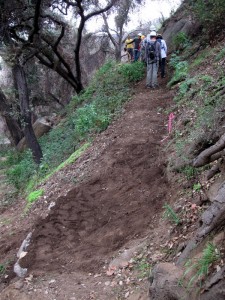
The original trail restored
Flash flooding and unstable hillsides are still major concerns, and the reason this and many other Station Fire trails will remain closed at least through next spring. In a recent meeting with the non-motorized trails supervisor for the forest, we discussed some creative ways that CORBA, the Friends of El Prieto and other volunteers might work together to open this trail sooner, rather than later. Some possibilities might include a “conditional” opening, where the trail would be closed at any sign of rain, and surveyed after each rain for safety. At this point, the mountain bike community would welcome any access to El Prieto.
Keeping the trail in good shape is the first and most important step towards that goal. Thanks again to everyone who came out!


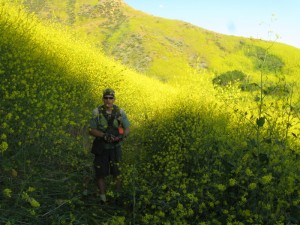
![rattle-snake-coiled[1]](http://corbamtb.com/news/wp-content/uploads/2011/01/rattle-snake-coiled1.jpg) MRT
MRT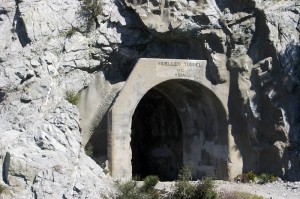
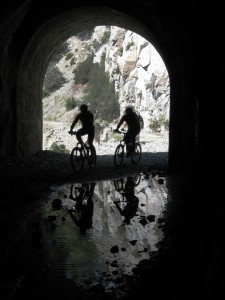
 Most trails in our local riding area don’t respond well to rain. They have a high content of clay that turns into sticky, slippery muck that binds to everything it touches. It builds up on the tires, like a snowball rolling downhill, until it jams on the frame and the wheels won’t budge. Some models of clipless pedals refuse to yield when full of this mud, resulting in the bike and the attached rider lying sideways in a puddle.
Most trails in our local riding area don’t respond well to rain. They have a high content of clay that turns into sticky, slippery muck that binds to everything it touches. It builds up on the tires, like a snowball rolling downhill, until it jams on the frame and the wheels won’t budge. Some models of clipless pedals refuse to yield when full of this mud, resulting in the bike and the attached rider lying sideways in a puddle.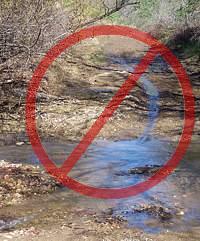 On wet trails, bikes make grooves down the middle. These grooves collect water when it rains again, turning first into little channels to move the water downhill, then into little ruts, then large ruts that destroy the trail. You’ve heard about the beat of a butterfly wing that causes a hurricane? Then remember the tire track that turns a tail into one large rut!
On wet trails, bikes make grooves down the middle. These grooves collect water when it rains again, turning first into little channels to move the water downhill, then into little ruts, then large ruts that destroy the trail. You’ve heard about the beat of a butterfly wing that causes a hurricane? Then remember the tire track that turns a tail into one large rut!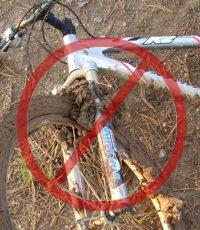 And the mud is particularly hard to remove. It sticks to the bike and shoes, no matter the efforts to remove it, rubbing off on the bike rack, car carpet and floor pedals. Once home, it takes the careful use of a garden hose to remove the mud but not force water into the sensitive parts of the bike.
And the mud is particularly hard to remove. It sticks to the bike and shoes, no matter the efforts to remove it, rubbing off on the bike rack, car carpet and floor pedals. Once home, it takes the careful use of a garden hose to remove the mud but not force water into the sensitive parts of the bike.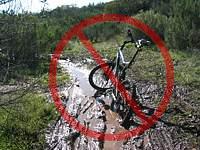 But if the trails are soaking, all is not lost if you need to ride! There are a few trails that hold up well when wet because they have more sand and rock that doesn’t hold the water. Here are a few you should know about:
But if the trails are soaking, all is not lost if you need to ride! There are a few trails that hold up well when wet because they have more sand and rock that doesn’t hold the water. Here are a few you should know about: